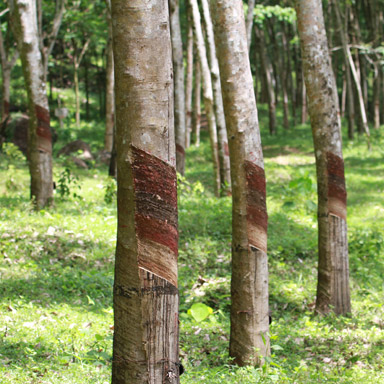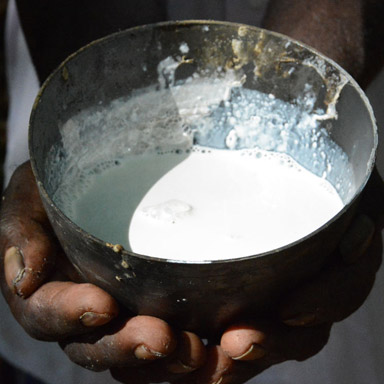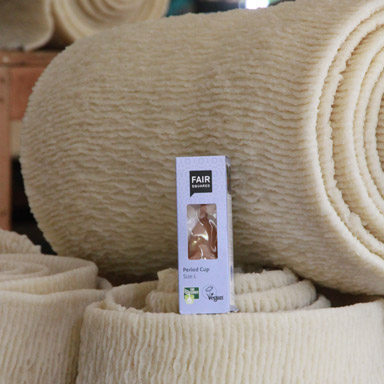



The natural rubber tree: a real allrounder, not just for us
A lot of FAIR SQUARED began with the raw material of our fair and vegan condoms – latex. By this term the milk of the rubber tree Hevea brasiliensis is meant. To collect the milk, the bark of the tree is cut so that the liquid can be gathered. Usually, the latex is collected in a container which is fixed to the tree.
What is made from natural rubber?
Most of the latex being processed is used in the tyre industry which is still today using 70 % of the world-wide harvest. Furthermore, natural rubber is being used in households and industrial environments. Hence, hot-water bottles, household gloves, and rubber boots as well as mattresses and gaskets are made from this natural material. Anything else? Condoms, indeed. And these already since the discovery of vulcanization in the middle of the 19th century.
How is natural rubber made from latex?
After the latex is harvested, it is collected for further processing. At a central point, the amount of milk and the share of latex are directly determined. Now, many stages follow in which the latex is pressed to lose water with the help of acidic materials. This makes the latex coagulate – similar to milk when lemon juice is added. The result is some kind of latex joghurt which is gradually being processed to crinkled sheets. These so-called crepes, which are afterwards checked for their quality, are for example the basis for rubber boots. If condoms or other products like gloves are to be produced, those rubber crepes are not used. Instead, liquid latex is chosen in which moulds are being dipped. In the process of vulcanization, sulphur is often used. By this, the material is made elastic and resistant to higher temperatures.
That’s why natural rubber needs to be fair
Regardless of whether the rubber tappers and other workers are employed on a plantation or the material is obtained from small farmers – the production is often characterized by alarming ecological and social deficiencies. For example inadequate security standards, a heavy usage of hazardous chemicals as pesticides or child labour can go hand in hand with everyday life. Not only the environment is critically endangered by the massive usage of pesticides – the plantation workers and tappers endanger their lives while working with these. Additionally to the ecological and social factors of the cultivation of latex, low world market prices make it even more important that a sustainable solution is found.
Face poverty and ecological consequences with fair trade
On the world market the prices for latex highly fluctuate which directly affects the lives of tappers and plantation workers. As the result of low prices for the milk from the rubber tree, poverty spreads. Also, violations of working rights are no longer a rare occurence. Furthermore, the poor Asian countries nowadays tend to cultivate palm oil trees instead of rubber tress when considering economic efficiency, since they promise higher returns at first sight. But: rubber trees are way more sustainable than tropical rainforests since they can absorb a multitude of carbon. All in all, many good reasons to emphasize fair trade in the context of natural rubber. By paying an supplementary fair trade premium per kilogram dry rubber, fair trade brings a small financial range for additional measurements which can improve the living and working conditions on-site. That we as FAIR SQUARED are able to be part of this project by selling our products made of fairly traded natural rubber like our condoms and Period Cups fills us with joy.
3. January 2019
